|
Artists' Collections The Artist as Collector: At Home with ShuvaprasannaAnkan Kazi and Soumava Das March 01, 2023 Artist and institution-builder Shuvaprasanna’s residence is located in a leafy corner of Kolkata’s suburban township, Bidhannagar or ‘Salt lake City’, which was envisaged by the former Chief Minister of West Bengal, Dr. Bidhan Chandra Roy in the late 1950s. Having grown up elsewhere—in College Street, in fact—the artist only moved here in 2002-03 with his family, which included his wife and fellow-artist, Shipra Bhattacharya. In this photo-essay we will learn about Shuvaprasanna’s personal collection and the relationship between his collecting practices and his art-making. |
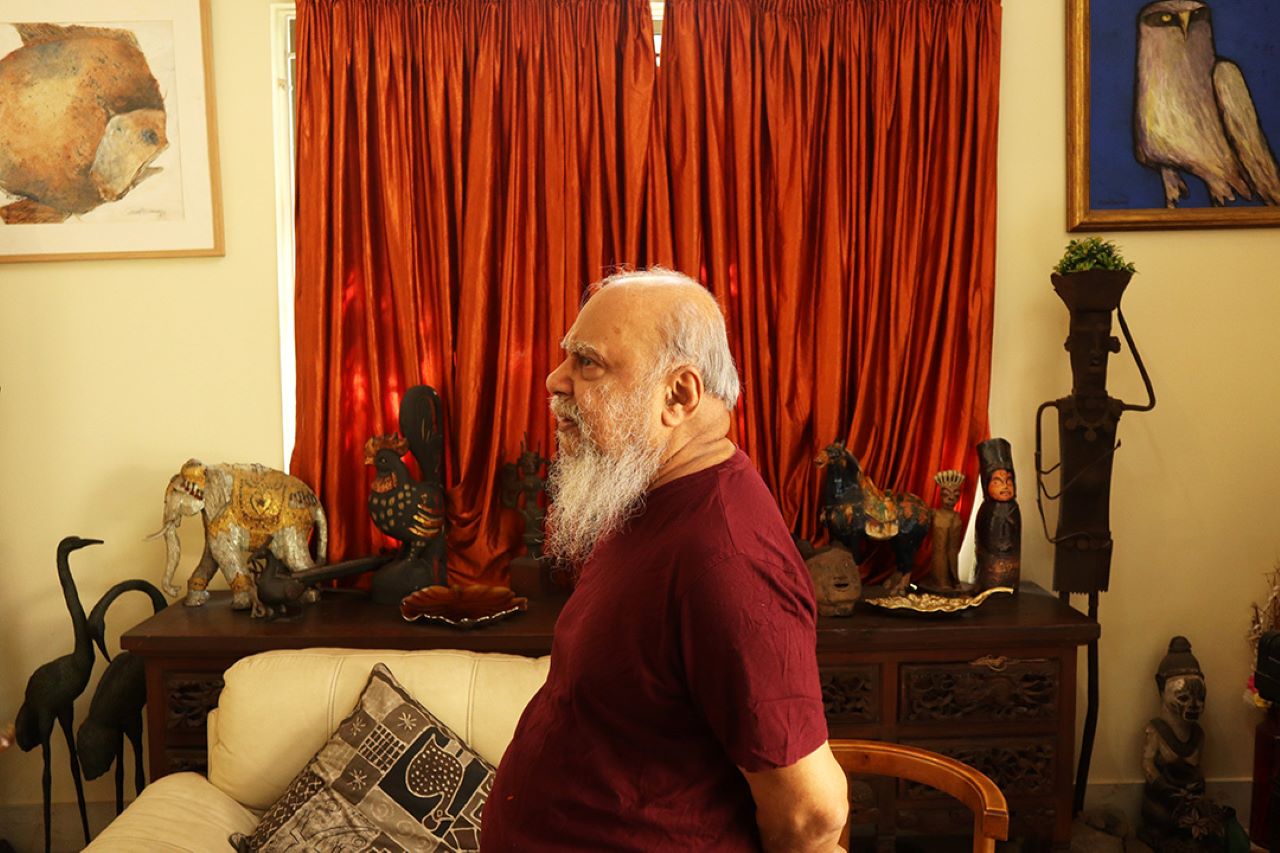
|
Shuvaprasanna intervened creatively in the design of his house, making sandcast, terracotta panels and glassworks (along with Shipra) and selecting passages from his favourite poems—by Rabindranath Tagore, Jibanananda Das and Sudhindranath Datta, among others—to decorate the intricate grille-works along staircases and hanging balconies. He made preparatory stencil sketches for the grilles, eventually relying on craftsmen to copy them in their own manner. |
|
|

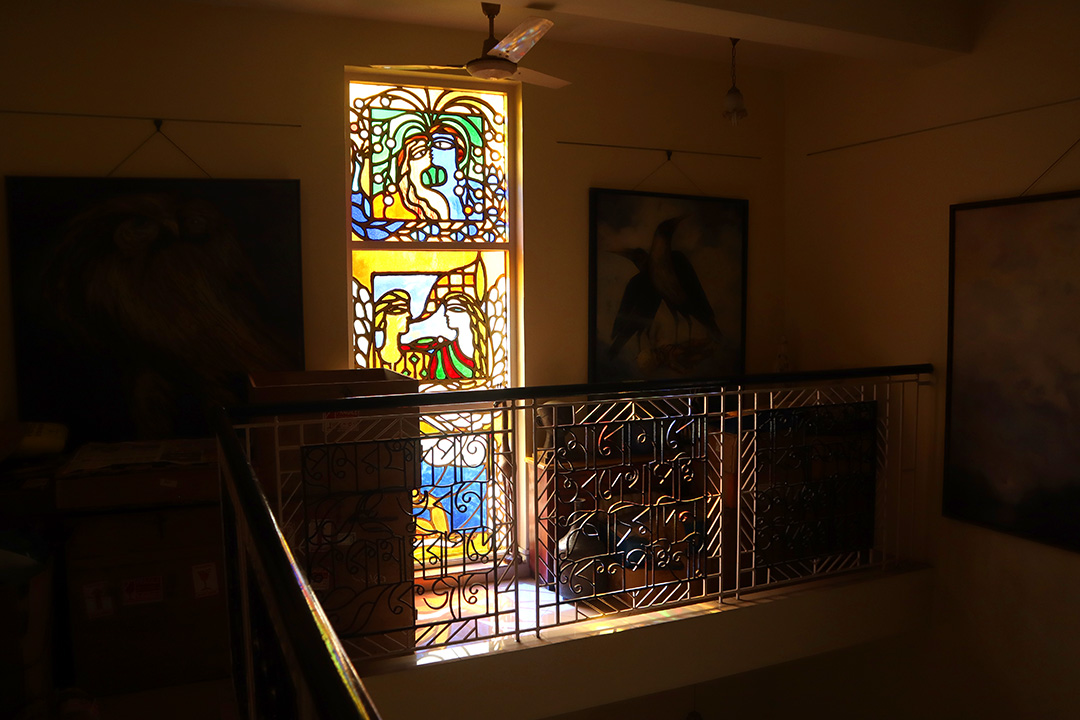
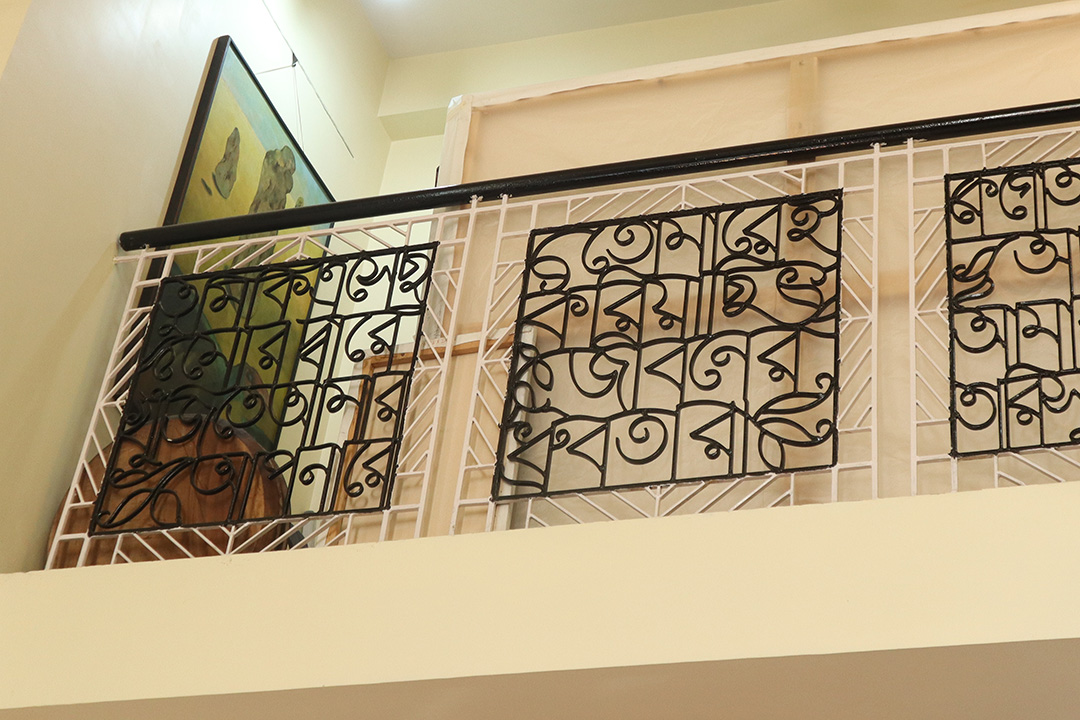
The coloured pieces of glass were sourced laboriously from by-lanes near Radha Bazar Street in central Kolkata (sometime in the late 1980s) and were eventually made into elaborate figurative glass-panels that cast iridescent hues on the sunlight as it streamed into his living room. |
|
In his memoir, My Life in Images, Shuvaprasanna describes his curiosity as the driver of artistic inspiration in his life. He offers a holistic view of accumulating experiences as well as objects: “My life is like a child picking seashells at the seashore. Perhaps one may find a jewel occasionally—jewels are very precious. But who determines that and why is it valuable? Who is it precious for? These are the questions that keep the different eras in play with each other.” |
|
|

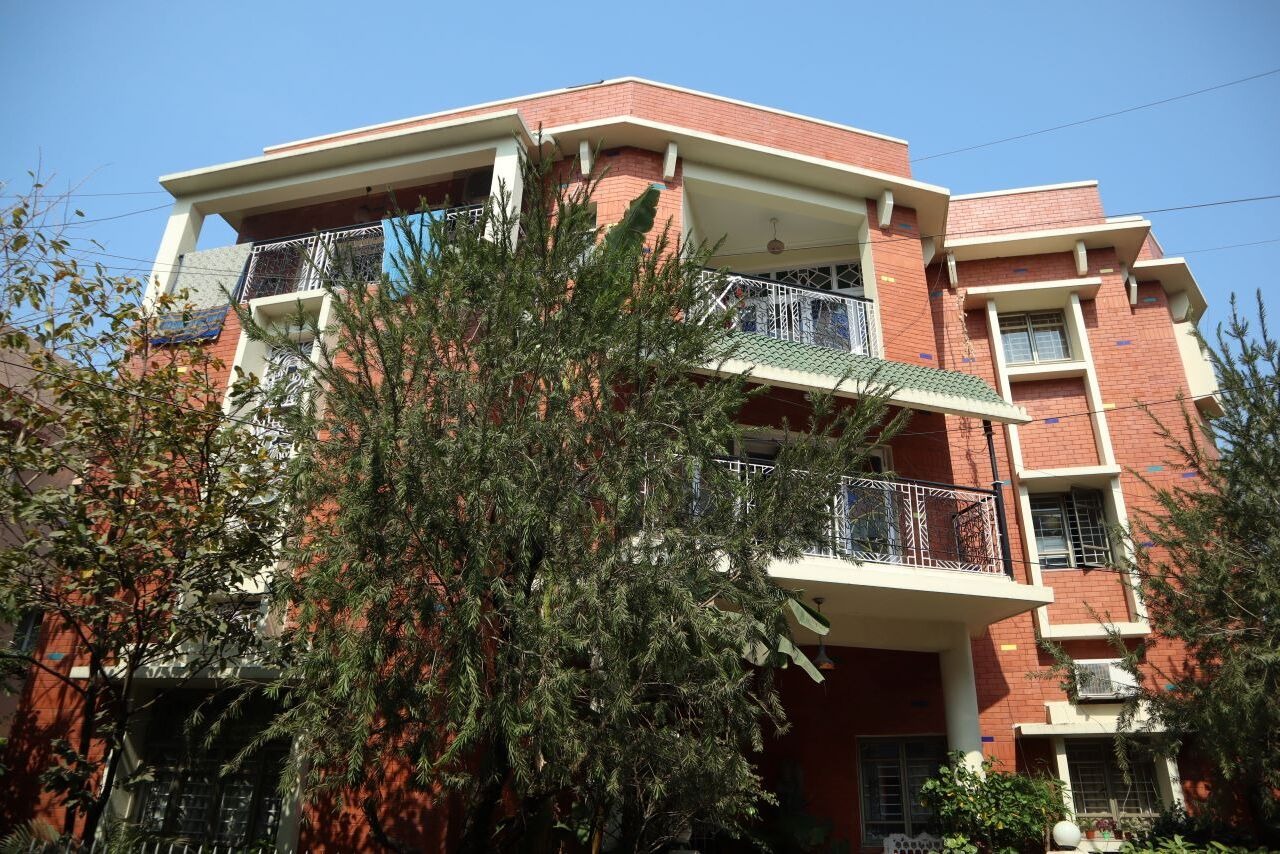
The artist saw his collection as an alternative map of his curiosities and explorations of distinct spaces, cultures and living craft traditions across the world. They often lead directly into the process of his own works, feeding his imagination with formal innovations, including floral or faunal shapes that he then transformed through his own mediation. |
|
Many of the artworks in his collection were made by himself at different periods of time. These works revealed his affinities with cultural landmarks, personalities and events in the city of Kolkata since the early 1970s, when he started his art practice. |
|
|
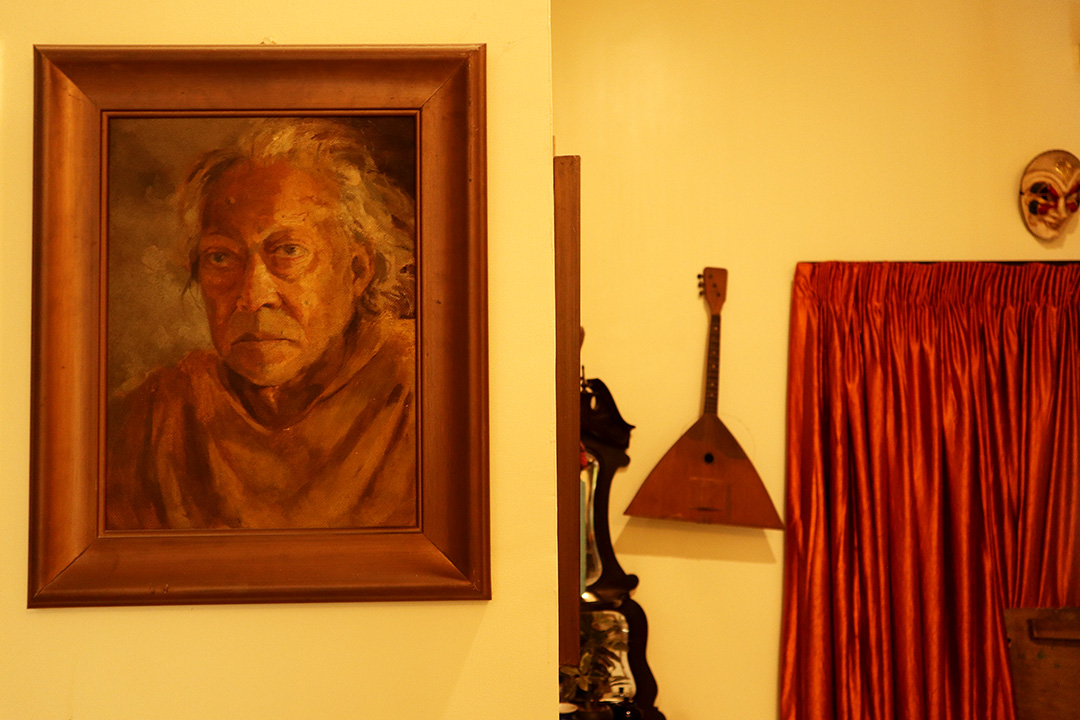
This a portrait of Shibram Chakraborty (1903-1980), the well-known humorist and writer in Bengali who died in relative penury. His novel Bari theke Paliye (Fleeing Home) was adapted into an eponymous feature film by Ritwik Ghatak. Shuvaprasanna observed him in his autumnal years, visiting his residence at Muktaram Babu Street frequently, and became a close friend. Witnessing the author’s decline, the artist made this portrait only a few days before he died, depicting him with as much honesty as compassion. |
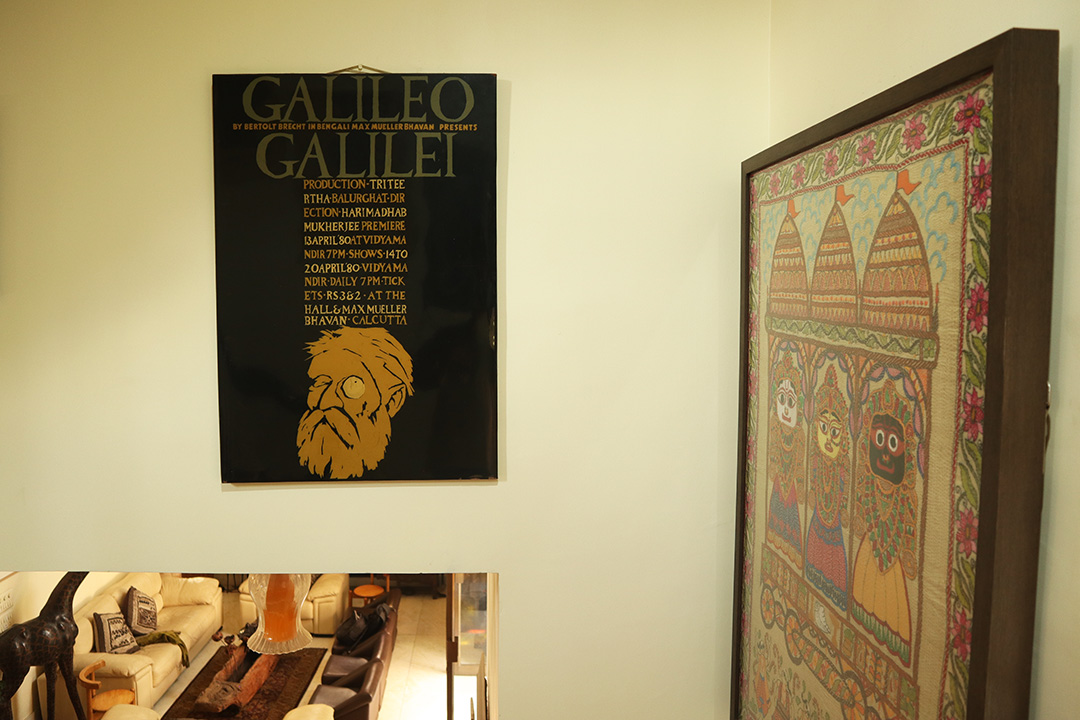
He also designed, silkscreened and printed this poster for a performance of Bertolt Brecht’s play Galileo that was staged in the late 1970s, supported by the Goethe-Institut in Kolkata. The play has been staged several times in the city and has a storied history of engaging with the politics of the cold war-era. |

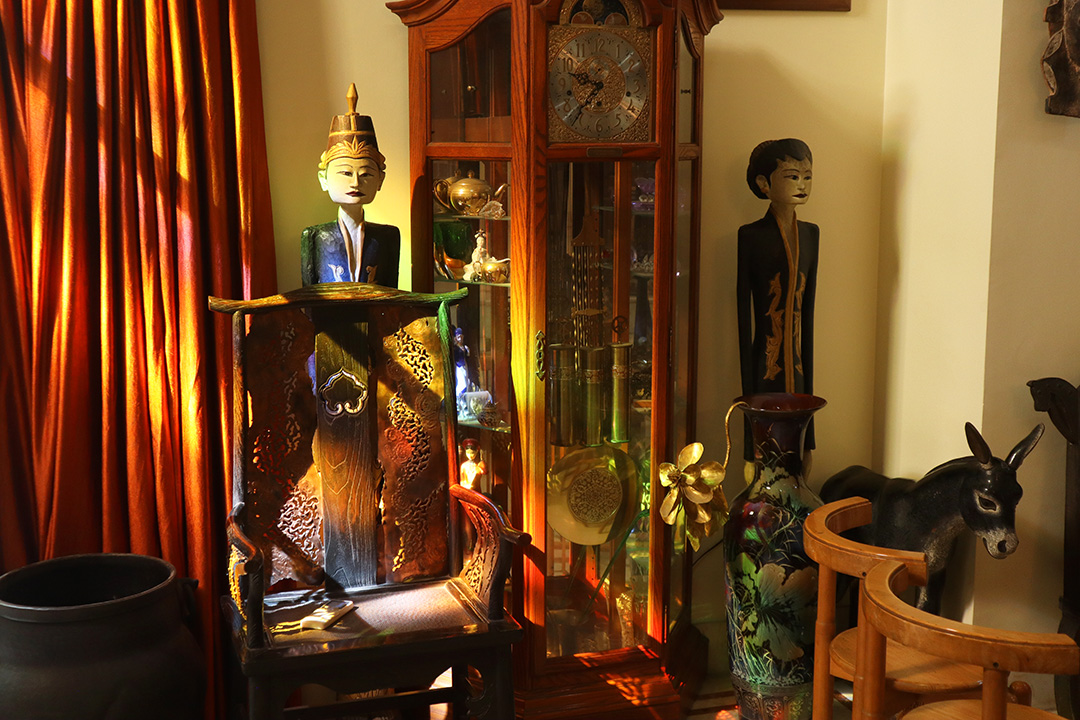
The centerpiece of his living room was occupied by a sinuous and fluted wooden object—organised around an elongated hollow centre—that was originally a threshing implement that the artist acquired from Jakarta in 2006. A pair of figurative statues—also acquired from Jakarta and depicting the former king and queen of Indonesia, carved from a single piece of wood—were lodged next to a custom-made clock. The clock was acquired from New Jersey. |
|
These were surrounded by an assortment of crafted furniture and artefacts. One such object was an antique paan (betel leaf) holder that was acquired from Bangladesh in 1978—possibly his oldest collected object. According to the artist craft-making represents the authentic cultural traditions of a community, unlike the densely networked, global influences that inform art school-educated painters, for instance. |
|
|


Aside from artworks and furniture, the artist has also collected several masks and musical instruments, such as this balalaika from a visit to Russia. |
|
A lot of the objects and artworks collected by the artist suggest his affinities and frequent travels to Southeast Asian nations such as Vietnam, Indonesia, Thailand, along with China. Aside from a personal interest they also attest to the numerous cultural exchange programmes that were conducted between newly emergent and formerly colonized political states that wanted to see themselves as 'non-aligned' to the dominant political blocs of the United States of America and the USSR at the time. |
|
|

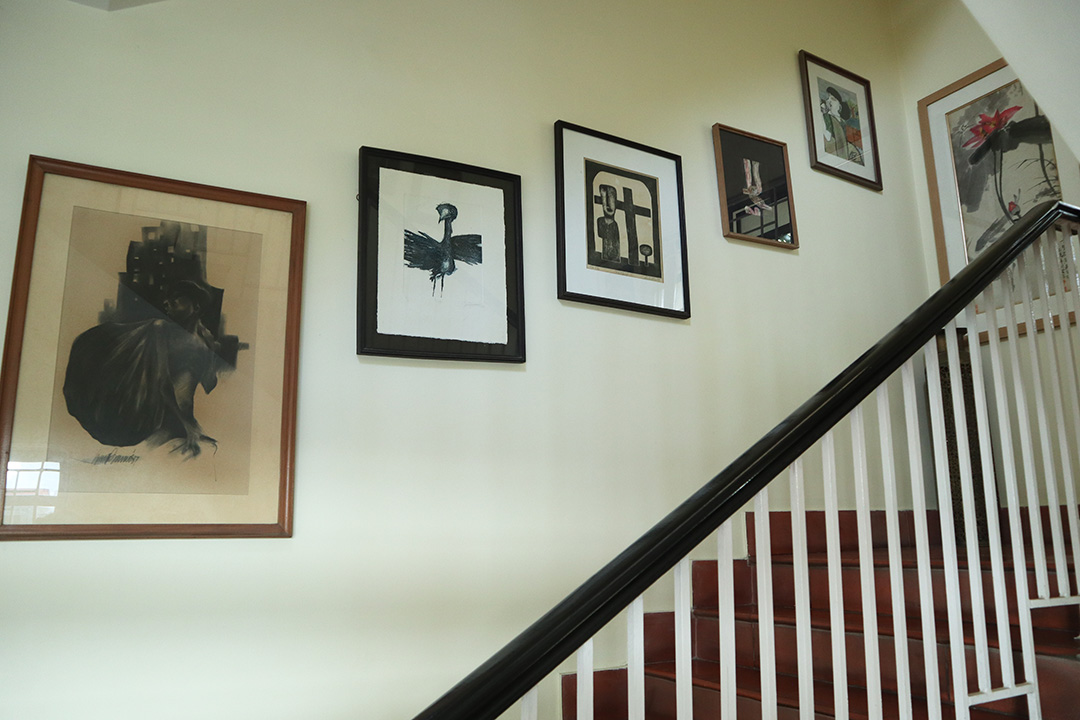
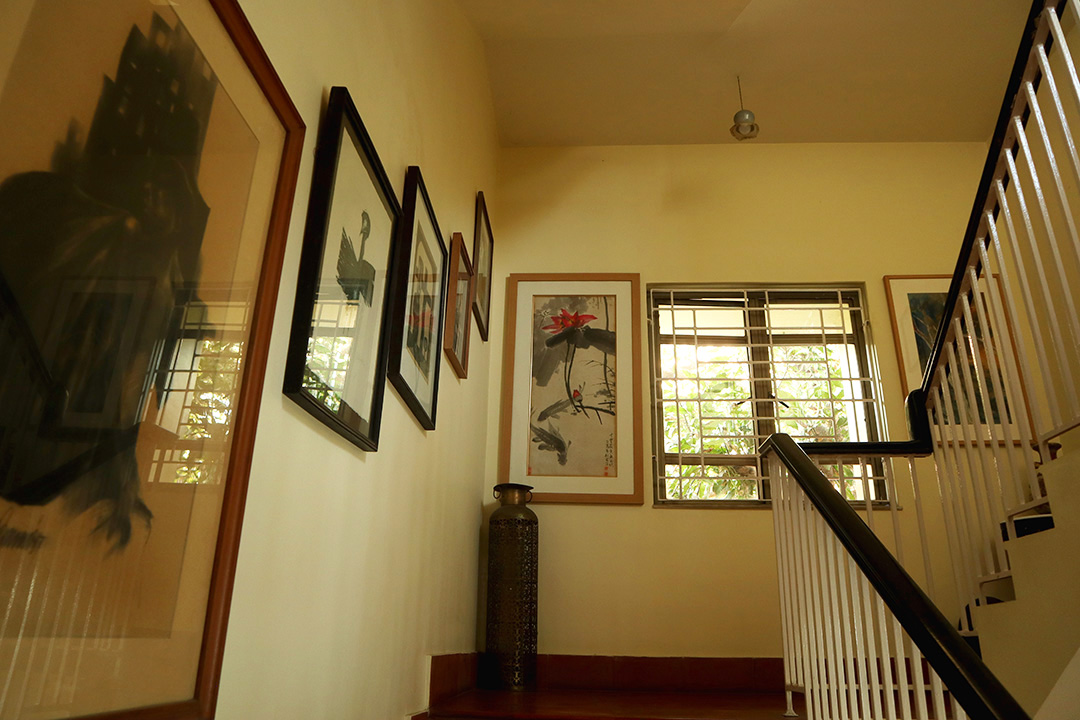
A delicate brush and ink painting from China graces a mezzanine wall on the way upstairs. Made by a contemporary artist, it was acquired during his second visit to the country in 2004-05. |
|
His own paintings were on display as well. They interacted with other objects in his collection, suggesting similarities in form and style, but also differences in the way they achieved their final forms as paintings or sculpture. Shuvaprasanna was attentive to the craft-traditions that provide substance to traditional styles of making art, but his works also evidenced a modernist’s struggle with form and individual expression, attempting to mould familiar images and symbols into distinctive marks on metal, wood or canvas. |
|
|
|
|


